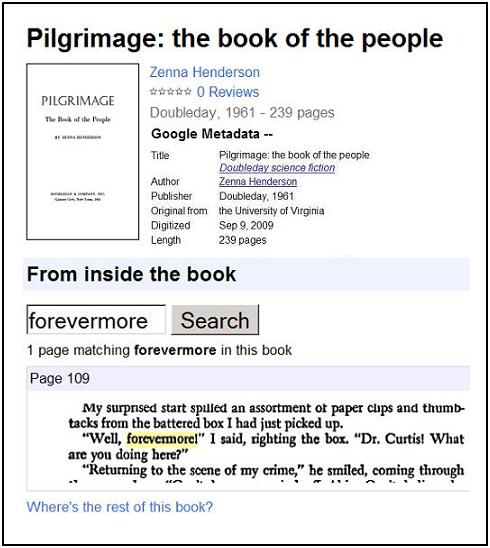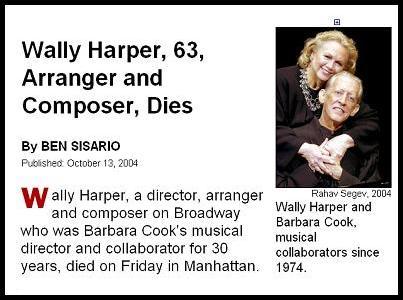Sunday, June 16, 2024
Naturalized Epistemology: Knowing Brooklyn
Tuesday, April 8, 2014
Thy Sting
A post from March 28, 2014 —
Art School ConfidentialFiled under: Uncategorized — m759 @ 4:01 AM |
March 28 was reportedly the date of death for a public figure:
Edwin Kagin, Atheist Who Battled Religion
in Public Sphere, Dies at 73.
Related material — the link Complex Reflection from March 28,
and a post on “The Sunset Limited.”
The “Sunset” post was suggested by the contrast between Kagin’s
views and those in a book by his son Stephen, a minister.
Friday, March 28, 2014
Art School Confidential
For Reba McEntire on her birthday:
Complex Reflection and Naturalized Epistemology.
Friday, October 18, 2013
Notes at the End (Or: Green October)
From the Spokane Spokesman-Review today —
"Services are pending for St. Aloysius Church at Gonzaga University"
This suggests a review of A Portrait of the Artist as a Young Man ,
a novel by James Joyce in the Viking Critical Library containing
a brief discussion of St. Aloysius Gonzaga.
In keeping with the approach to epistemology in today's previous post…
See also the link to remarks on naturalized epistemology
at the end of "Scoop," a Log24 post from the date
of the above review — July 9, 2004.
Monday, March 28, 2011
Music for Zenna
Part I: Naturalized Epistemology
Part II: Peter Cameron
Monday, August 23, 2010
Multispeech
Continued from Halloween 2005 —
An image suggested by three articles found online today—
Google's Book Search: A Disaster for Scholars
(Chronicle of Higher Education )
Searching for Planet X
(New York Times )
Deep in Rural Appalachia —
(New York Times )

For another disaster for scholars, see Naturalized Epistemology.
Wednesday, June 10, 2009
Wednesday June 10, 2009
Abstract Classicist
“It’s going to be accomplished
in steps, this establishment of
the Talented in the
scheme of things.”
— Anne McCaffrey, Radcliffe ’47
Click on images to enlarge.
Related material:
Tuesday, March 22, 2005
Tuesday March 22, 2005
Make a Différance
From Frida Saal's
Lacan  Derrida:
Derrida:
From a Contemporary Literary Theory website:
"Différance is that which all signs have, what constitutes them as signs, as signs are not that to which they refer: i) they differ, and hence open a space from that which they represent, and ii) they defer, and hence open up a temporal chain, or, participate in temporality. As well, following de Sassure's famous argument, signs 'mean' by differing from other signs. The coined word 'différance' refers to at once the differing and the deferring of signs. Taken to the ontological level†, the differing and deferring of signs from what they mean, means that every sign repeats the creation of space and time; and ultimately, that différance is the ultimate phenomenon in the universe, an operation that is not an operation, both active and passive, that which enables and results from Being itself."
Make a Difference Day, Oct. 23, 1999:
 22. Without using the Pythagorean Theorem prove that the hypotenuse of an isosceles right triangle will have the length 22. Without using the Pythagorean Theorem prove that the hypotenuse of an isosceles right triangle will have the length  if the equal legs have the length 1. Suggestion: Consider the similar triangles in Fig. 39. if the equal legs have the length 1. Suggestion: Consider the similar triangles in Fig. 39.23. The ancient Greeks regarded the Pythagorean Theorem as involving areas, and they proved it by means of areas. We cannot do so now because we have not yet considered the idea of area. Assuming for the moment, however, the idea of the area of a square, use this idea instead of similar triangles and proportion in Ex. 22 above to show that x =  . .
— Page 98 of Basic Geometry, by George David Birkhoff, Professor of Mathematics at Harvard University, and Ralph Beatley, Associate Professor of Education at Harvard University (Scott, Foresman 1941) |
Though it may be true, as the president of Harvard recently surmised, that women are inherently inferior to men at abstract thought — in particular, pure mathematics* — they may in other respects be quite superior to men:
The above is from October 1999.
See also Naturalized Epistemology,
from Women's History Month, 2001.
† For the diamond symbol at "the ontological level," see Modal Theology, Feb. 21, 2005. See also Socrates on the immortality of the soul in Plato's Meno, source of the above Basic Geometry diamond.
Wednesday, October 13, 2004
Friday, July 9, 2004
Friday July 9, 2004
Scoop
This afternoon I came across, in a briefcase I seldom use, two books I had not looked at since I bought them last month:
- The Footprints of God, a recently published paperback by Greg Iles, a writer who graduated from Trinity High School, Natchez, Mississippi, in 1979, and from the University of Mississippi in Oxford in 1983.
- Sanctuary, by the better-known Mississippi writer William Faulkner.
At the time I purchased the books, indeed until I looked up Iles on the Web today, I was not aware of the Mississippi connection. Their physical connection, lying together today in my briefcase, is, of course, purely coincidental. My view of coincidence is close to that of Arthur Koestler, who wrote The Challenge of Chance and The Roots of Coincidence, and to that of Loren Eiseley, who wrote of a dice game and of "the Other Player" in his autobiography, All the Strange Hours.
A Log24 entry yesterday referred to a comedic novel on the role of chance in physics, Cosmic Banditos. Today's New York Times quotes an entertainer who referred to President Bush yesterday, at a political fund-raiser, as a bandito. Another coincidence… this one related directly to the philosophy of coincidences expounded jokingly in Cosmic Banditos.
I draw no conclusions from such coincidences, but they do inspire me to look a little deeper into life's details — where, some say, God is. Free association on these details, together with a passage in Sanctuary, inspired the following collage:

Related Texts
Faulkner on a trinity of women
in Sanctuary (Ch. 25):
"In Defense of the Brand":
"When I was helping Frito corn chips expand its core user group in the mid-'90s, we didn't ask Frito-Lay to just wave the Fritos banner. The brand was elevated to a place where it could address its core users in a way that was relevant to their lifestyle. We took the profile of the audience and created a campaign starring Reba McEntire. It captured the brand's essence, and set Frito eaters amidst good music, good people, and good fun."
just plain white trash,
but Fancy was my name."
Loren Eiseley,
Notes of an Alchemist:
I never found
the hole in the wall;
I never found
Pancho Villa country
where you see the enemy first.
— "The Invisible Horseman"
Friday, March 28, 2003
Friday March 28, 2003
Bright Star
From a Spanish-English dictionary:
lucero m. morning or evening star: any bright star….
Today is Reba McEntire's birthday.
" 'I know what it is you last saw,' she said; 'for that is also in my mind. Do not be afraid! But do not think that only by singing amid the trees, nor even by the slender arrows of elven-bows, is this land of Lothlórien maintained and defended against the Enemy. I say to you, Frodo, that even as I speak to you, I perceive the Dark Lord and know his mind, or all his mind that concerns the Elves. And he gropes ever to see me and my thought. But still the door is closed!'
She lifted up her white arms, and spread out her hands towards the East in a gesture of rejection and denial. Eärendil, the Evening Star, most beloved of the Elves, shone clear above. So bright was it that the figure of the Elven-lady cast a dim shadow on the ground. Its ray glanced upon a ring about her finger; it glittered like polished gold overlaid with silver light, and a white stone in it twinkled as if the Even-star had come to rest upon her hand. Frodo gazed at the ring with awe; for suddenly it seemed to him that he understood.
'Yes', she said, divining his thought, 'it is not permitted to speak of it, and Elrond could not do so. But it cannot be hidden from the Ring-Bearer, and one who has seen the Eye. Verily it is in the land of Lórien upon the finger of Galadriel that one of the Three remains. This is Nenya, the Ring of Adamant, and I am its keeper.' "
— J. R. R. Tolkien, The Lord of the Rings
Related material on telepathy:
Shining Forth and Naturalized Epistemology
Related material on rings, and another musical Reba:
Leonard Gillman interview, Part I and Part II
Gillman, a pianist, is co-author of Rings of Continuous Functions.









